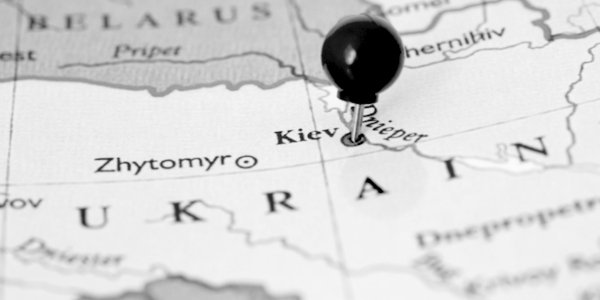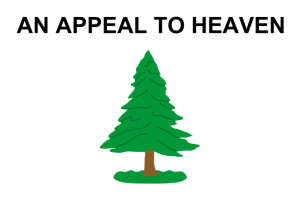WE ARE due to learn tomorrow of the American plan to end the war in Ukraine. This plan will be presented by General Keith Kellogg, Donald Trump’s special envoy, at the Ukraine Defense Contact Group summit in Brussels. There has been a deal of inspired guesswork about what Kellogg’s proposals might be – but it is not hard to come to some ideas at least. Kellogg is an experienced and pragmatic officer, and as well as a distinguished military career he served in the Coalition Provisional Authority in Baghdad. I had the pleasure of serving with him twice.
Any plan to end the war would consist of two phases: Phase One would end the fighting; Phase Two would end the war. Phase Two will take a great deal of hard negotiating, and the Russians are in no mood to compromise – why should they? They are winning the war at the operational and strategic levels, if suffering tactical setbacks. Let us therefore look at Phase One.
The positions of Russian and Ukrainian troops would be frozen on their current lines, generally east of the Dnieper River. It would then require a third party, probably Nato, to monitor this line and, if necessary, enforce compliance with any ceasefire agreement, although that would depend on the mandate which would have to be agreed by both parties. At once we run into problems. Putting Nato troops from any nation east of the Dnieper will place them into direct contact with Russian forces, with all the possibilities of miscalculation by either side. Then there is the issue of finding the troops. Any ceasefire line is likely to be around 800 miles long, requiring around 200,000 troops to police it effectively. This means an army level headquarters with three corps and their constituent divisions and corps troops. A force would deploy an observation line of ground troops, with additional overwatch from satellites, drones and aircraft. Backing the first line would be reaction forces: artillery and missiles are the most manoeuvrable force elements, followed by attack helicopters and fixed-wing aircraft, and finally ground formations. The only Nato nation capable of fielding the framework, with at least one of the corps, is the US – but the US Government has already ruled out any boots on the ground. It is possible that American air power might support ground troops, but that has not been confirmed. Also, we must understand that a headline figure of 200,000 means that to keep such a force in place with suitable troop rotation periods for two to three years actually requires 600,000 troops. The US Joint Chiefs know this; nor do they have any intention of confronting Russia at this point. They also clearly understand that to deploy the whole of the V Corps and then follow it up would effectively fix the US Army on a static line, giving its enemies freedom of action elsewhere.
There are other possible contributors – Turkey has large enough armed forces, but the Ukrainians are most unlikely to agree to a large force of pro-Russian, pro-Iranian Muslim troops on their territory. Poland might make up at least part of a corps – but without a US lead, this is all make-believe. Underlining the US position is their hand-over of the duties of host of the Brussels meeting to the UK. Sir Keir Starmer, of course, has jumped at this opportunity, clearly without having understood that the absence of a US contribution makes any Nato effort shadowy. Why is Starmer so keen? Because he is in the throes of negotiating a new defence ‘pact’ with the EU, which would place British forces under the control of the unelected, unaccountable, EU Commission – the first step in his attempts to undo Brexit through the back door. Starmer has been explicit that the UK is ready to take the lead on a European force in Ukraine – note the language. But again, there are serious problems. Without US participation, the most that European Nato could manage would be a peacekeeping-type force of lightly armed troops – well, we know what happened with such a force at Srebrenica, for example. And the leadership? For any nation to take the lead in such a force it would have to provide a sizeable contingent. The British Army can barely put a single brigade in the field, much less keep it there. Its qualifications and credibility for leadership are simply smoke and mirrors.
Even if such a force were deployed, the very best case that could be hoped for would be to freeze the conflict permanently, as has happened in Korea since 1953. The worst case would be that Zelensky would be obliged to make serious territorial concessions which would be unacceptable to a significant proportion of his people and his army. Most estimates say that two-thirds of Ukrainians are opposed to such concessions; many of these are very far right, neo-Nazi elements such as the Azov Brigade. One possible outcome would be a Ukrainian civil war, which the Russians would simply watch. Interestingly, following his comments that territorial concessions could be made, Zelensky followed Starmer’s visit to Kiev by showing up briefly and quietly in London last week. There is a view that this was to reconnoitre his bolt-hole for the day that he has to flee his country; of course, I cannot comment.
It is possible to reach only one conclusion from all this: that the so-called peace deal, and with it, Starmer, are being set up for failure. With no possibility of finding the troops or the command and control for a ceasefire monitoring force and with Zelensky backed into a corner on concessions, the proposed deal will founder. Trump, of course, will be able to say that he tried but was let down – as usual – by European countries and by a Ukrainian government unable to make any compromises. The aid tap would then be turned off and with the European shot-locker empty, the war will drag on pointlessly.











